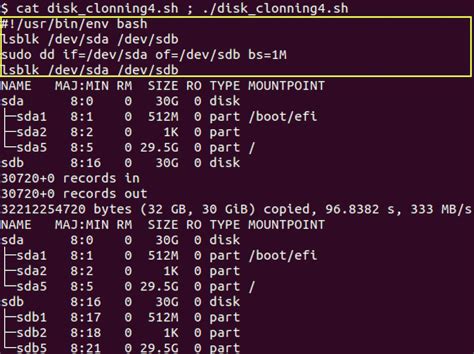centos 7 clone not booting properly With kernel 3.10.957 the boot process goes fine. I tried to run a yum update which installed a new kernel (and initramfs) and boot with latest kernel, but problem persists. I tried to change the .
Kriminālistikas pārvaldes Dokumentu tehnisko ekspertīžu nodaļas eksperti veic Latvijas un ārvalstu dokumentu tehniskās ekspertīzes (dažādi personu identifikācijas dokumenti, vadītāja apliecības, maksājumu kartes, kompaktdiski, utt.).) un rokraksta ekspertīzes. Šajās ekspertīzēs tiek noteikta dokumentu un to rekvizītu .
0 · linux cloned disk
1 · clonezilla won't boot
2 · clonezilla not cloning disk
3 · clonezilla not booting linux
4 · clonezilla cloned disk not booting
5 · centos7 dracut boot error
6 · centos vhdx boot error
Ekoshop, Rīga, Latvija — atrašanās vietu kartē, telefons, darba laiks, atsauksmes. Atrasts kategorijās: apģērbu veikals, mājsaimniecības preču veikals. direct map
Is the bios declaring the boot failure or do you get to grub? Did you do a full disk clone or a partition clone? For starters this link might help (its for grub2 , introduced in centos 7).

all chanel bag names
I'm trying to make my brand-new HP Z4G4 workstation boot to CENTOS 7 from its SSD drive, but after it indicated which kernel it's using, spins its wheel, and shows its faint "7" . The clone was successful but when I try to boot, it fails and I end up with the GRUB prompt. The disk contains a Centos 7 installation and I understand that grub refers to the boot . Run this in the VM before you clone it: dracut --force --no-hostonly. After you clone the VM, boot it and run: dracut --force. If you've already cloned the VM, you can connect the virtual disk to IDE to boot it (as noted by others) and .

linux cloned disk
I have now unplugged my 3TB drive and am trying to boot to my 500gb drive, but it loads an initramfs shell and never launches to mint. What do I need to do to get my cloned .With kernel 3.10.957 the boot process goes fine. I tried to run a yum update which installed a new kernel (and initramfs) and boot with latest kernel, but problem persists. I tried to change the .
How about changing boot options like EFI to legacy BIOS before cloning? If clonezilla won’t work, you could just boot-up with any Linux CD and do a basic disk to image . In this tutorial we are going to show you how you can clone a block device, typically a hard-disk on top of which we run a CentOS 8/7 server (or any Linux distribution .Administrators can use these shells to fix any issues that prevent the system from booting normally; for example, a dependency loop between services, or an incorrect entry in /etc/fstab. . For cases when the system will not boot after reaching the grub2 menu. You should start by editing the grub menu and searching for syntax errors. If you find one, correct it and .
clonezilla won't boot
clonezilla not cloning disk
Is the bios declaring the boot failure or do you get to grub? Did you do a full disk clone or a partition clone? For starters this link might help (its for grub2 , introduced in centos 7).

I'm trying to make my brand-new HP Z4G4 workstation boot to CENTOS 7 from its SSD drive, but after it indicated which kernel it's using, spins its wheel, and shows its faint "7" on the screen, it goes to emergency mode.
The clone was successful but when I try to boot, it fails and I end up with the GRUB prompt. The disk contains a Centos 7 installation and I understand that grub refers to the boot partition via its UUID (in grub.cfg) and the same UUID is used in /etc/fstab for the /boot partition.
Run this in the VM before you clone it: dracut --force --no-hostonly. After you clone the VM, boot it and run: dracut --force. If you've already cloned the VM, you can connect the virtual disk to IDE to boot it (as noted by others) and run the first command. I thought I could clone a running CentOS 7.7 installation by replicating the contents of the /, /boot, /boot/efi partitions on the target disk and then modifying the /etc/fstab and the grub.cfg files to allow for the UUID changes. I have now unplugged my 3TB drive and am trying to boot to my 500gb drive, but it loads an initramfs shell and never launches to mint. What do I need to do to get my cloned 500gb drive to boot correctly? With kernel 3.10.957 the boot process goes fine. I tried to run a yum update which installed a new kernel (and initramfs) and boot with latest kernel, but problem persists. I tried to change the UUID of the boot partition and updating the grub config, but results are the same.
How about changing boot options like EFI to legacy BIOS before cloning? If clonezilla won’t work, you could just boot-up with any Linux CD and do a basic disk to image copy: cat /dev/sda > /mnt/usb/73gb.img Since today, I cannot boot into my Linux CentOS 7. I am directly taken to emergency mode. I have tried the following commands without success: sudo umount /dev/sdb1 and sudo fsck -p /dev/sdb1. I have included the journalctl output for reference.
In this tutorial we are going to show you how you can clone a block device, typically a hard-disk on top of which we run a CentOS 8/7 server (or any Linux distribution such as RHEL, Fedora, Debian, Ubuntu, etc.). Is the bios declaring the boot failure or do you get to grub? Did you do a full disk clone or a partition clone? For starters this link might help (its for grub2 , introduced in centos 7).
I'm trying to make my brand-new HP Z4G4 workstation boot to CENTOS 7 from its SSD drive, but after it indicated which kernel it's using, spins its wheel, and shows its faint "7" on the screen, it goes to emergency mode. The clone was successful but when I try to boot, it fails and I end up with the GRUB prompt. The disk contains a Centos 7 installation and I understand that grub refers to the boot partition via its UUID (in grub.cfg) and the same UUID is used in /etc/fstab for the /boot partition. Run this in the VM before you clone it: dracut --force --no-hostonly. After you clone the VM, boot it and run: dracut --force. If you've already cloned the VM, you can connect the virtual disk to IDE to boot it (as noted by others) and run the first command.
I thought I could clone a running CentOS 7.7 installation by replicating the contents of the /, /boot, /boot/efi partitions on the target disk and then modifying the /etc/fstab and the grub.cfg files to allow for the UUID changes.
clonezilla not booting linux
I have now unplugged my 3TB drive and am trying to boot to my 500gb drive, but it loads an initramfs shell and never launches to mint. What do I need to do to get my cloned 500gb drive to boot correctly? With kernel 3.10.957 the boot process goes fine. I tried to run a yum update which installed a new kernel (and initramfs) and boot with latest kernel, but problem persists. I tried to change the UUID of the boot partition and updating the grub config, but results are the same. How about changing boot options like EFI to legacy BIOS before cloning? If clonezilla won’t work, you could just boot-up with any Linux CD and do a basic disk to image copy: cat /dev/sda > /mnt/usb/73gb.img Since today, I cannot boot into my Linux CentOS 7. I am directly taken to emergency mode. I have tried the following commands without success: sudo umount /dev/sdb1 and sudo fsck -p /dev/sdb1. I have included the journalctl output for reference.
clonezilla cloned disk not booting
The Ego Clash 2023 event brought together the crème de la crème of the cannabis community, showcasing unparalleled talent and solventless innovation. Among the Rosin categories, Yeti Melts, Pure and Proper, and JahBotanist claimed the top three in that order, while Trichome Tortoise, Passion4hashin, and the Real Cannabis Chris secured .
centos 7 clone not booting properly|clonezilla not booting linux
























